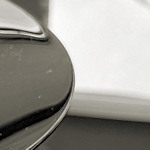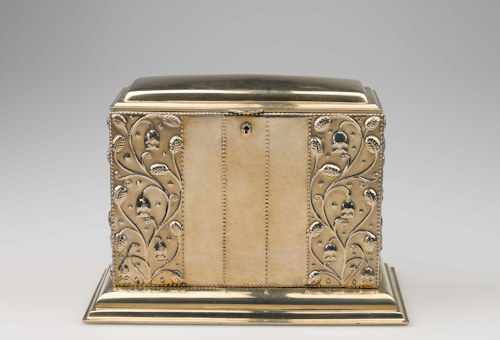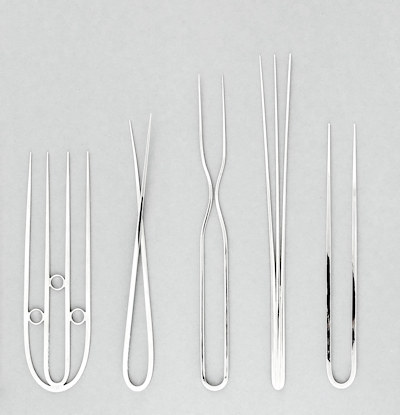
Numerous art and craft metal workshops existed to meet the eruption of demand that struck late 19th-century Vienna. Among the more successful was Werkstätte Hagenauer, the subject of an exhibition at the MAK.
- Covers the workshop’s products, history & creative developments
- Over 250 objects, including works by renowned sculptor Franz Hagenauer
- Runs Nov 16, 2022 – Sept 3, 2023
- See also:
Viennese metal art 1898-1987

(Carl Hagenauer, cassette, 1912, alpaca, silver-plated © MAK/Katrin Wißkirchen)
Certain names tend to dominate exhibitions on particular epochs and genres.
The design conversation around the Wiener Moderne era, for example, tends to feature the creative names behind the Wiener Werkstätte. But numerous other workshops and designers were also active at that time.
Consider the family-run Werkstätte Hagenauer craft metal workshop, which built a record of design excellence right up until the company closed in 1987.
Carl Hagenauer founded the Werkstätte in 1898 and soon turned production away from the influences of the past.
The workshop began to incorporate expressive Jugendstil designs, then took on more restrained forms echoing the approach of the Wiener Werkstätte. It then developed its own adapted styles, unconstrained by one single design philosophy or an obsession with metalworking solely as an art form.
The MAK’s small Werkstätte Hagenauer exhibition provides insights into the associated products, personalities, and processes.
Hagenauer’s output runs like a thread through much of Vienna’s modern history. For example, the new clocks put in during post-WWII repairs to parliament came from the workshop. As did the Austrian coat of arms that still top the flagpoles outside the building.
Hagenauer’s influence extended far beyond the banks of the Danube, though.
For example, in the 1932 US movie, Grand Hotel, Greta Garbo utters the immortal lines, “I want to be alone.” The film also features an Art Deco table lamp from the workshop, which we see in a still from the movie.
Indeed, one display includes a trilingual catalogue page for paperweights (English, French, and German). And Hagenauer’s 1928 catalogue actually featured prices in both the local currency and US dollars.

(Franz Hagenauer, serving fork, 1981, metal, silver-plated © MAK)
The exhibition occupies one long gallery and includes dozens of objects sourced from the museum’s own collections as well as loans.
Those objects range from everyday household items through to the sculptures of Franz Hagenauer (1906-1986), a renowned artist in his own right and subject of a solo exhibition at Vienna’s Leopold Museum earlier in 2022. Enjoy cutlery, chairs, clocks, chess pieces, coat hooks, and more.
At the top of the stairs leading up to the exhibition, for example, a beautifully-conceived giant display case greets you with brass sculptures, candleholders, vases, and similar. Other chronological wall displays allow you to trace the evolution of style through the objects themselves.
The exhibition goes beyond showcasing products, though.
You also see biographies of those most closely associated with the workshop, notably the founder Carl Rudolf Hagenauer (1872-1928) and the two sons Franz and Karl (1898-1956).
And several displays let you glimpse behind the scenes of the production or creative process. So you might view a design drawing next to both a rough cast of the same figure and the nickel-plated final product.
All-in-all, a well-presented dip into the world of the metal workshop and a valuable contribution to your understanding of historical Viennese art and artisan culture.
Dates, tickets & tips
Admire the majestic metalwork from November 16th, 2022 to September 3rd, 2023. Any valid entrance ticket to the MAK includes the Werkstätte Hagenauer exhibition.
The exhibition room sits within the Vienna 1900 permanent exhibition, which offers a host of other delicious design objects from the particularly creative and progressive era that was the Wiener Moderne.
For a glimpse of the kind of metal accessories that might have come from the Hagenauer Werkstätte, cross the road and order a coffee at Café Prückel, which features 1950s décor.
How to get to the MAK
Follow the travel tips at the end of the main MAK article.
Address: Stubenring 5, 1010 Vienna